music art film review - REDEFINE magazine
English-Spanish Bilingualism in Indie Music: This is El Futuro (Bilingual Feature)
![English-Spanish Bilingualism in Indie Music: This is El Futuro]()
ENGLISH TEXT & INTERVIEWS BY KARLA HERNANDEZImagine an ordinary day. You're driving home from work, maybe listening to the new Gardens & Villa track -- or perhaps that one Vampire Weekend song that you pretend not to like, or something more classic like The Beatles. You then stop at a red light, and the car next to you is blasting mariachi music. Annoyed, you instantly think to yourself, 'Why is it so loud? Why is the singer wailing? What is the singer even saying?' Something unfamiliar shows up, and instantly a barrier goes up. It's okay. We all do it, to varying degrees. Maybe at that Chinese restaurant where you dined last night, the moment the server went into the kitchen and started talking really fast in Mandarin, you gave your friend a funny look.
SPANISH TRANSLATION BY JEAN-CLAIRE PELTIAEImagina un día ordinario. Estas conduciendo del trabajo a la casa, quizás escuchando el nuevo tema de Gardens & Villa, o tal vez esa canción de Vampire Weekend que finges que no te gusta, o algo más clásico como los Beatles. A continuación, te detienes en un semáforo en rojo, y el auto al lado tiene música mariachi a todo volumen. Molesto, de inmediato piensas, "¿Por qué lo tienen tan alto? ¿Por qué esta gimiendo el cantante? ¿Qué está diciendo el cantante?" Aparece algo desconocido, y en este instante se forma una barrera. Todos lo hacemos, en grados diferentes. Tal vez en ese restaurant chino donde comiste anoche, en el momento que el mesero entro a la cocina y empezó hablando rápido en Mandarín, le dio a tu amigo una mirada rara.
![]()
Considering the large populations of immigrants that have lived throughout the past hundreds of years in the United States, it's odd to think that something as simple as language can create disconnections between us. Going back to Gardens & Villa, Vampire Weekend, and The Beatles, we listen to these bands without giving it a second thought. However, their music would not exist today without the cultural blending that occurred decades before them.
Blues and jazz were born in African-American communities, and rock mixed R&B with country, blues and folk. The Beatles received a lot of attention for incorporating the sitar in some of their songs, while Paul Simon was influenced by music from South Africa. Who knows where modern Western music would be today if our musical ancestors did not explore and experiment with mixing their own regional music with that of other areas? These were musicians who traveled to different regions of the world and were inspired by the music of other countries. Now, these other countries are affecting contemporary Western music through immigration. To use the United States as an example, immigrants here are changing the DNA of communities, job markets, schools, public policy, and the economy. Musicians who are immigrants or children of immigrants are finding their feet, heart, and minds in two worlds. Not only is their worldview different; the way that they communicate is literally different.
Considerando la gran población de inmigrantes que han vivido en los Estados Unidos a través de los últimos siglos, es extraño pensar que algo tan simple como el idioma puede crear desconexiones entre nosotros. Volviendo a Gardens & Villa, Vampire Weekend y los Beatles, escuchamos estos grupos sin pensarlo. Sin embargo, su música no existiría hoy sin la mixtura cultural que ocurrió décadas antes de su aparición.
El Blues y el Jazz nacieron en comunidades afro-americanas, y rock mezcló R&B con country, blues y folk. Los Beatles recibieron mucha atención por incorporar el citar en algunas de sus canciones, mientras Paul Simon fue influenciado por la música de Sudáfrica. ¿Quién sabe donde estaría la música occidental hoy si nuestros ancestros musicales no hubieran explorado, experimentado y mezclando su propia música regional con la de otras áreas? Estos eran músicos que viajaban a diferentes regiones del mundo y fueron inspirados por la música de otros países. Ahora estos otros países están afectando la música occidental a través de la inmigración. Usando a los Estados Unidos como ejemplo, los inmigrantes aquí están cambiando el ADN de comunidades, mercados de trabajo, escuelas, políticas públicas y la economía. Los músicos que son inmigrantes o hijos de inmigrantes están encontrando sus pies, corazones y mentes en los dos mundos, sus dos países. No solo su visión global es diferente; su forma de comunicarse es distinta literalmente.
"I hope that by mixing Spanish and English in a song, I am giving monolingual speakers a bit of a foothold, something to grasp as they explore the other language. I also feel like the mix is a reflection of who we are as a society of immigrants, and I hope that fans can see themselves in that reflection. – Rafi eL
"Espero que mediante la mezcla de español e Inglés en una canción, estar dando un peldaño al hablante monolingües; algo para agarrarse mientras exploran el otro idioma. Siento también que el mezclaje es una reflexión de quien somos como sociedad de inmigrantes, y espero que los fanáticos pueden reconocerse en esa reflexión." – Rafi eL
Language as an Instrument // El Idioma como Instrumento
From Los Angeles to New York and the San Francisco Bay Area, new crops of indie rock, electronic and hip-hop artists with Latin American backgrounds are not only expressing themselves through an array of multicultural guitar rhythms and drum beats, but also with bilingualism, incorporating both English and Spanish lyrics. While the majority of these artists simply view prose as another musical instrument rather than an educational tool, they are a part of shift that in the future might very well become a standard. Through their own natural expression, they are pushing boundaries and opening paths that are waiting to be explored by the curious.
Brooklyn-based Xenia Rubinos explains her ability to paint her music with both English and Spanish saying, "The mix of the languages in my music happens organically. My primary instrument is my voice, and included in the sounds I can produce are words in languages some people can understand. I see words as another tool to play with in the sandbox."
Rubinos, who was born and raised in Hartford, Connecticut to a Puerto Rican mother and Cuban father, continues to explain that regardless of language, words are just another sound and texture in a song. Just like guitars can be made to emit different tones and quality of sounds, varying languages can also fulfill different roles. On her album Magic Trix, Rubinos utilizes an impressive number of voice techniques to build each song's structure. The album starts off with an 18-second bare bones vocal line. Each word is carefully spaced out as if she was walking a tightrope; it seems as if she gives too much emphasis to one word over the other, she will tip over. She brings together even more ideas on the song "Ultima", where she starts with a beatbox layer and then adds on a sweet melody in English. About a minute in, the attitude changes as her voice becomes fierce and switches to Spanish. With those examples, it is obvious that a lot of thought is put into the delivery, in addition to the actual meaning of the words.
"It seems to me that more and more in popular music, words are being used as a textural or sonic tool rather than to tell a story as would be the case in more 'classic' songwriting," she says. "Perhaps it's more immediate like our culture is now. We're getting everything fast in bits and pieces."
While not falling into the bilingual category, groups like Dirty Projectors, Animal Collective and tUnE-yArDs are a few that fit Rubinos's description. Like her, these musicians are shape-shifters in the way that they alter their voices to create interesting song structures and layer on other instruments that seem to clash, but somehow work together in harmony.
The approach is inventive and creates a more diverse palette, yet bilingualism can also be used for practical purposes. For other musicians, the inclusion of both English and Spanish was more of an evolutionary process rather than one of pushing sonic boundaries.
De Los Ángeles a Nueva York y la bahía de San Francisco, nuevos exponentes de rock independiente, electrónica y artistas de hip-hop con raíces Latino-americanas están expresándose no solo a través de una gran variedad de ritmos de guitarra y batería multiculturales, sino también con el bilingüismo, incorporando tanto letras en ingles y español. Si bien la mayoría de estos artistas simplemente ven la prosa como otro instrumento musical en lugar de una herramienta educativa, también forman parte de un cambio que en el futuro podría transformarse en un patrón. A través de su propia expresión natural, están empujando los límites y abriendo caminos que están esperando a ser explorados por los curiosos.
Con sede en Brooklyn Xenia Rubinos explica su habilidad para pintar su música con Inglés y Español, diciendo, "el mezclaje de los idiomas en mi música ocurre de forma orgánica. Mi instrumento primario es mi voz, e incluido en los sonidos que puedo producir hay palabras en idiomas que personas diferentes pueden entender. Veo las palabras como otra herramienta para jugar en el arenero."
Rubinos, quien nació y se crió en Hartford, Connecticut, de madre puertorriqueña y padre cubano, continúa explicando que, independientemente del idioma, las palabras son solo otro sonido y textura en una canción. Como las guitarras pueden emitir distintos tonos y calidades de sonidos, diversos idiomas también pueden cumplir con roles diferentes. En su álbum "Magic Trix," Rubinos utiliza una cantidad impresionante de técnicas vocales para crear la estructura de cada canción. El álbum comienza con 18 segundos de un solo vocal minimalista. Cada palabra es cuidadosamente espaciada como si ella estuviera en una cuerda floja; en esta situación, si diera demasiado énfasis a una palabra por sobre otra, se caería. Se juntan aun mas ideas en la canción "Ultima," donde empieza con una capa de beat box, y agrega una melodía dulce en ingles. Después de aproximadamente un minuto, la actitud se cambia cuando su voz se vuelve feroz y cambia a español. Con estos ejemplos, es obvio que piensa mucho sobre la entrega, además del significado real de las palabras.
"Me parece que cada vez, mas música popular, esta usando palabras como herramientas sónicas o texturales en vez de contar una historia como seria el caso en composición 'clásica'," ella dice. "Quizás es mas inmediato como es nuestra cultura ahora. Estamos recibiendo todo en pedazos."
Aunque no forman parte de la categoría bilingüe, grupos como Dirty Projectors, Animal Collective y tUnE-yArDs son algunos que encajan en la descripción que hace Rubino. Como ella, esos músicos son cambiantes en la manera que alteran sus voces para crear canciones con estructuras interesantes y extender capas encima de otros instrumentos que parecen chocar, pero de alguna forma funcionan en harmonía.
El acercamiento es inventivo y crea una paleta más diversa, pero el bilingüismo también puede ser usado con propósitos prácticos. Para otros músicos, la inclusión tanto de ingles y español fue mas un proceso evolucionario que uno de empujar fronteras sónicas.
![]()
On the other side of the United States, Los Angeles-based producer and rapper Rafi eL says that he first started writing solely in English, but soon found another world when he attempted to write in Spanish.
"I noticed that I could do things in Spanish that were harder for me in English – certain rhythms, certain vocal styles, even certain emotions," he explains.
Although born in Jerusalem, Rafi eL grew up in Los Angeles, where he was able to get a good grasp of the Spanish language. He learned Spanish from his parents who are Argentine Jews and both born in Buenos Aires, but in Los Angeles, he was exposed to different styles of Spanish. Over time, his Argentine Spanish was mixed with varieties of Mexican and Salvadoran influence.
Taking a careful listen to his songs will show that he strategically identifies which parts need to be in English and which would be better in Spanish. In Spanish, prepositions are often less complicated, thus creating a better flow. Certain phrases can also be reduced to use fewer words, and the famous "rolling r" can also create a more pleasant sound.
In his song "Senda", Rafi eL starts the first verse in English, setting a more structured and serious tone as the lyrics talk about a struggle. The energy of the song becomes more weightless as soon as he starts singing in Spanish; the phrases are shorter, making it easier for the listener to follow the melody. Despite being used over the same tropical-infused beats and Andes-inspired tones, the Spanish lyrics seem to have more of a swing – though it is not to say that the Spanish portions are better than the English ones. Each simply serves its own purpose.
By using bilingualism as creative inspiration, the influence of each language is equally important and interchangeable. Whereas, Rafi eL started writing in English and then transitioned into Spanish, the reverse happened for another Los Angeles-based band, Las Cafeteras.
The seven-piece band consists of members who grew up in various parts of LA, but have Jewish, Mohawk, and Mexican backgrounds. They began by playing a very traditional type of Mexican music called Son Jarocho, which is naturally paired with Spanish lyrics. However, as the band members started to add a twist with other personal influences, including other types of music genres, they started to incorporate English words into the music.
"It came naturally from our fascination [with] translation, connection of multiple worlds, and... hip-hop," explains band member Hector Flores.
While still respecting the traditions of the Son Jarocho style, it did not take long for the music to move toward a path that reflected the band members' diverse upbringings. Just like someone can be exposed to different styles of Spanish in LA, the same can be said for genres of music that surround an immigrant or child of an immigrant living in LA.
"I grew up listening to oldies from my pops, hip-hop from the radio, romanticas from my mom, and new wave from my friends," recalls Flores. "Las Cafeteras are a very open band that experiments with different sounds, instruments, melodies or whatever feels natural to us, which includes languages. We all grew up in LA, which is a world city. We were all influenced by the wonders that our city has to offer and wish to incorporate the beautiful mishmash of languages that are natural to us."
En el otro lado de los Estados Unidos, el rapero y productor Rafi eL de Los Ángeles dice que al principio empezó escribiendo solo en inglés, pero de pronto descubrió otro mundo cuando intentó escribir en español. 'Me di cuenta que podía hacer cosas en español que eran más difícil para mí en inglés- ciertos ritmos, ciertos estilos vocales, incluso ciertos emociones," explica.
Aunque nació en Jerusalén, Rafi eL se crio en Los Ángeles, donde podía conseguir una buena comprensión de la lengua española. Aprendió español de sus padres, quienes son judíos argentinos y ambos nacidos en Buenos Aires, pero en Los Ángeles fue expuesto a estilos diferentes de español. Con el tiempo, su español argentino se mezclo con influencias del español mexicano y salvadoreño.
Escuchando cuidadosamente sus canciones, muestran que el identifica estratégicamente cuales partes deben ser en inglés y cuales serían mejores en español. En español, las preposiciones son frecuentemente menos complicadas, así creando un mejor flujo. Ciertas frases también pueden ser reducidas a menos palabras, y el famoso "r ondulante" puede producir un sonido más atractivo.
En su canción "Senda", Rafi eL comienza el primer verso en inglés, estableciendo un tono más estructurada y seria cuando las letras hablan de una lucha. La energía de la canción se vuelve más liviana tan pronto como empieza a cantar en español, las frases son más cortas, por lo que es más fácil para el oyente seguir la melodía. A pesar de ser utilizar los mismos ritmos tropicales y tonos inspirados en los Andes, las letras españolas parecen tener más swing - que no quiere decir que las partes españolas son mejores que las inglesas. Simplemente, cada una cumple su propósito.
Al utilizar el bilingüismo como fuente de inspiración creativa, la influencia de cada lenguaje es igualmente importante e intercambiable. Mientras Rafi eL comenzó a escribir en Inglés y luego hizo la transición al español, lo contrario sucedió para otra banda de Los Ángeles, Las Cafeteras.
La banda de siete músicos que se criaron en varias partes de Los Ángeles, pero que tienen antecedentes judíos, mohawk, y mexicanos. Comenzaron tocando un tipo muy tradicional de música mexicana llamada Son Jarocho, que se empareja de forma natural con letra en español. Sin embargo, como los miembros de la banda comenzaron a añadir un toque con otras influencias personales, incluyendo otros tipos de géneros de la música, comenzaron a incorporar palabras en inglés dentro de sus canciones.
"Nació naturalmente de nuestra fascinación por la traducción, la conexión de múltiples mundos, y el hip-hop," explica un miembro de la banda, Hector Flores.
Sin dejar de respetar las tradiciones del estilo de Son Jarocho, no pasó mucho tiempo para que la música avanzara hacia un camino que refleja las diversas educaciones los miembros de la banda. Al igual como una persona puede estar expuesta a diferentes estilos de español en Los Ángeles, lo mismo puede decirse de los géneros de la música que rodean a un inmigrante o hijo de un inmigrante que vive en Los Ángeles.
"Crecí escuchando oldies de mi papá, el hip-hop de la radio, románticas de mi mamá, y la nueva ola de mis amigos," recuerda Flores. "Las Cafeteras son una banda muy abierto que experimenta con diferentes sonidos, instrumentos, melodías o lo que se siente natural para nosotros, que incluye idiomas. Todos hemos criado en Los Ángeles, que es una ciudad global. Todos éramos influenciados por las maravillas que nuestra ciudad tiene para ofrecer y deseamos incorporar la bella mezcolanza de lenguas que son naturales para nosotros.
"When I listen to Portuguese hip-hop, or West African music, or even punk in the US, I don't always know the lyrics, but I feel the life that exists in the music. Most of our music is in Spanish, and we have played for audiences where Spanish is not their first language. Folks will come to us after a show and tell us that they didn't understand everything, but they felt everything." - Hector Flores, Las Cafeteras
"Cuando escucho hip-hop portugués o la música de África occidental, o incluso punk en los EE.UU., no siempre sé las letras, pero siento la vida que existe en la música. La mayor parte de nuestra música es en español, y hemos tocado para públicos donde el español no es su lengua materna. La gente se nos acerca después de un show y nos dicen que ellos no entendían todo, pero sentían todo." - Héctor Flores, Las Cafeteras
READ ALL: Bilingual Articles + Scene Report Features
![Las Cafeteras]()
music art film review - REDEFINE magazine
English-Spanish Bilingualism in Indie Music: This is El Futuro (Bilingual Feature)

 Kazuo Ohno © H. Tsukamoto
Dance is a corporeal poetry that speaks to us through sensual body memory and intangible thought, thus communicating experience and expressing ideals. We may, for instance, find the most exquisite aspirations to perfection in the sculptural forms of ballet and the etiquettes of ballroom dance -- but what dance is there to speak of anguish and terror? What of the uncontainable spirit that seeps from our grotesque beings in spite of vigilant taboo? Would it not be deceptive to express the most visceral of human experience through only forms of chiseled beauty?
Dance that declares itself as an encompassing language for human experience yet speaks from under a veneer of piety for conventional aesthetics is fundamentally dishonest. With passionate protest to the void in integrity of expression and against standards of superficiality, Butoh emerged at the end of the 20th century.
It was in the shadow of the nuclear bombings of Hiroshima and Nagasaki that Butoh's first breaths were drawn, already shuddering naked and borne by true darkness. Shaped into its ghostly form by dancers Kazuo Ohno and Tatsumi Hijikata, Butoh came to define Japanese avant-garde dance in its embrace of the totality of emotional experience and the absurdity found in the raw body. Ohno and Hijikata composed a new lyric for the human body where nothing was forbidden to experience. The revolutionary spirit of Butoh explored morbidity and sexuality in its most explicit forms. By doing so, it not only transformed the Japanese stage but connected with international audiences and dancers, tantalizing a universal desire for this same purity of expression. Until the '60s, there had been no such dance within Japan that allowed for the communication of the uninhibited body and, as far as technical form, there still exist few such parallels.
Kazuo Ohno © H. Tsukamoto
Dance is a corporeal poetry that speaks to us through sensual body memory and intangible thought, thus communicating experience and expressing ideals. We may, for instance, find the most exquisite aspirations to perfection in the sculptural forms of ballet and the etiquettes of ballroom dance -- but what dance is there to speak of anguish and terror? What of the uncontainable spirit that seeps from our grotesque beings in spite of vigilant taboo? Would it not be deceptive to express the most visceral of human experience through only forms of chiseled beauty?
Dance that declares itself as an encompassing language for human experience yet speaks from under a veneer of piety for conventional aesthetics is fundamentally dishonest. With passionate protest to the void in integrity of expression and against standards of superficiality, Butoh emerged at the end of the 20th century.
It was in the shadow of the nuclear bombings of Hiroshima and Nagasaki that Butoh's first breaths were drawn, already shuddering naked and borne by true darkness. Shaped into its ghostly form by dancers Kazuo Ohno and Tatsumi Hijikata, Butoh came to define Japanese avant-garde dance in its embrace of the totality of emotional experience and the absurdity found in the raw body. Ohno and Hijikata composed a new lyric for the human body where nothing was forbidden to experience. The revolutionary spirit of Butoh explored morbidity and sexuality in its most explicit forms. By doing so, it not only transformed the Japanese stage but connected with international audiences and dancers, tantalizing a universal desire for this same purity of expression. Until the '60s, there had been no such dance within Japan that allowed for the communication of the uninhibited body and, as far as technical form, there still exist few such parallels.
 "I come from Buenos Aires, Argentina. I was exposed to dance, theater and cinema since my childhood. My parents worked in the theater, so the theater where they used to work was like my second home… I was fascinated by the Lindsay Kemp company. I also remember Moses Pendleton (creator of the MOMIX company). My mother took me to see many incredible performances by the Argentinean choreographer Oscar Araiz and the wonderful French artist Jean Francois Casanovas. I was also struck by Laurie Anderson's work: her strength and manly appearance. Peter Brook's play Peter Brook's play The Man Who... based on clinical tales by Oliver Sacks, The Man Who Mistook His Wife For A Hat (1985).
In 2011, I created a piece called My Hometown Is In My Shoes. This dance theater work focuses mainly on the feet. The shoes are seen as a home, and this responds to my condition as a foreigner living abroad for many years, not grounded or rooted to any particular place.
I always try to make work using very basic means. My aim is to be able to create something powerful out of very simple and immediate things. This idea comes from my origin.
I studied art in Argentina... I remember with admiration how the art students in Buenos Aires used to make amazing work out of nothing. They worked with very basic means, as we didn't count with high technology and all the facilities, but with brilliant minds. The lack of resources makes you more creative. This is what has influenced me the most about my country."
"I come from Buenos Aires, Argentina. I was exposed to dance, theater and cinema since my childhood. My parents worked in the theater, so the theater where they used to work was like my second home… I was fascinated by the Lindsay Kemp company. I also remember Moses Pendleton (creator of the MOMIX company). My mother took me to see many incredible performances by the Argentinean choreographer Oscar Araiz and the wonderful French artist Jean Francois Casanovas. I was also struck by Laurie Anderson's work: her strength and manly appearance. Peter Brook's play Peter Brook's play The Man Who... based on clinical tales by Oliver Sacks, The Man Who Mistook His Wife For A Hat (1985).
In 2011, I created a piece called My Hometown Is In My Shoes. This dance theater work focuses mainly on the feet. The shoes are seen as a home, and this responds to my condition as a foreigner living abroad for many years, not grounded or rooted to any particular place.
I always try to make work using very basic means. My aim is to be able to create something powerful out of very simple and immediate things. This idea comes from my origin.
I studied art in Argentina... I remember with admiration how the art students in Buenos Aires used to make amazing work out of nothing. They worked with very basic means, as we didn't count with high technology and all the facilities, but with brilliant minds. The lack of resources makes you more creative. This is what has influenced me the most about my country."

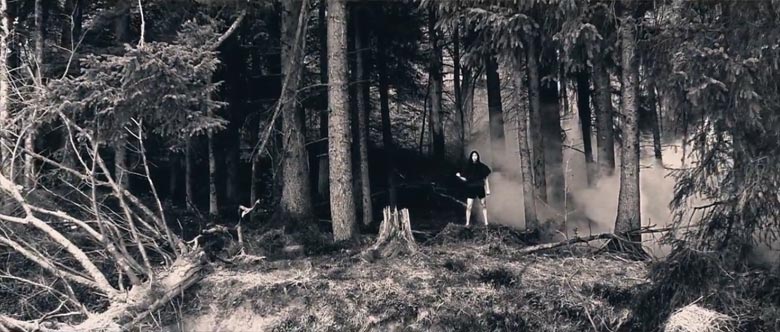

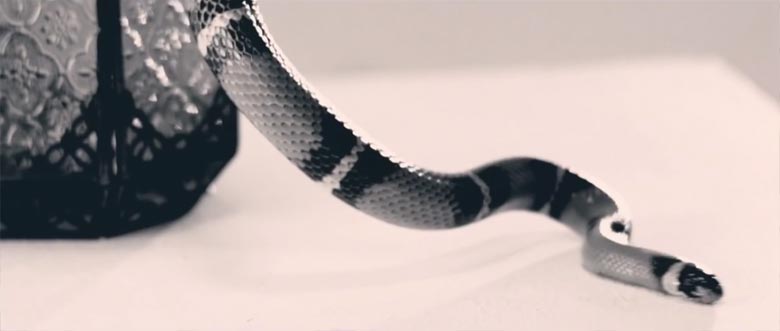
 Tokyo geisha with shamisen, circa 1870s
Tokyo geisha with shamisen, circa 1870s
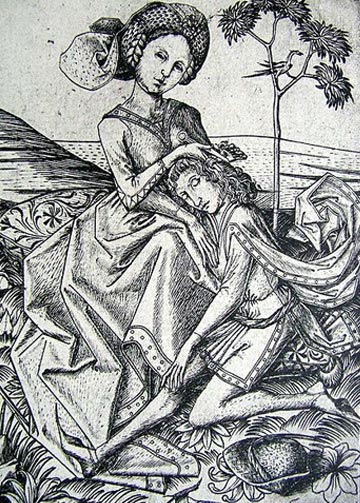 Delilah cutting Samson's hair, c. 1460
Delilah cutting Samson's hair, c. 1460
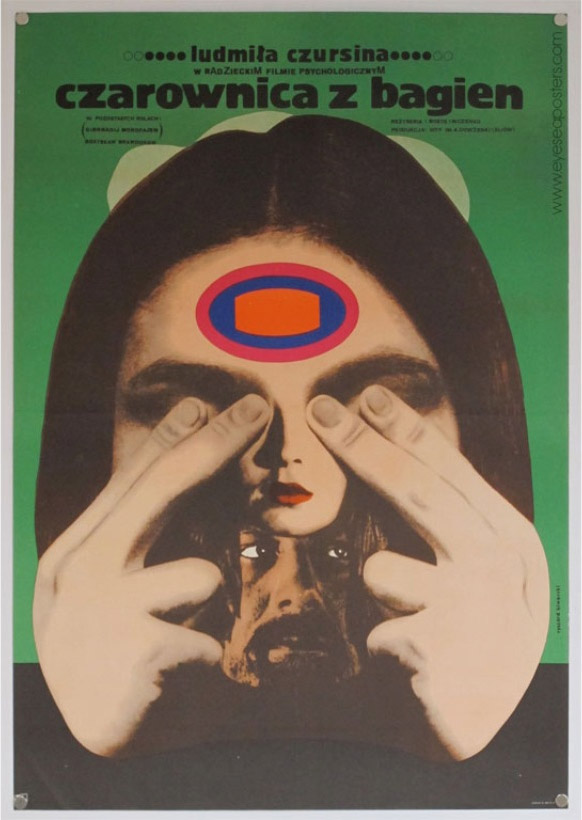




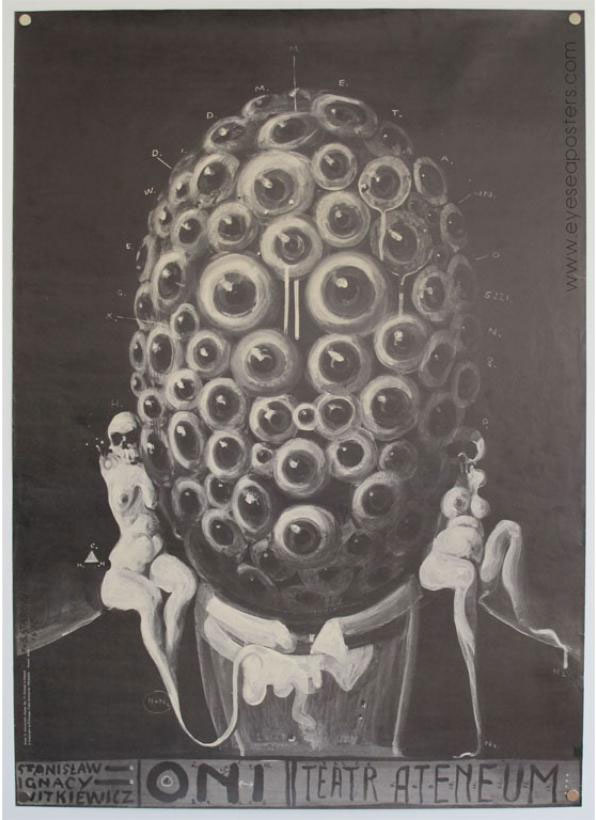





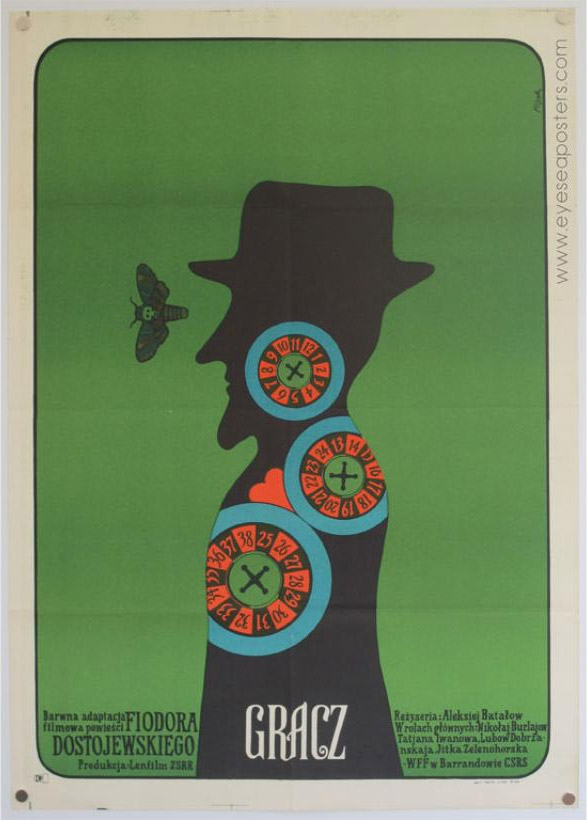

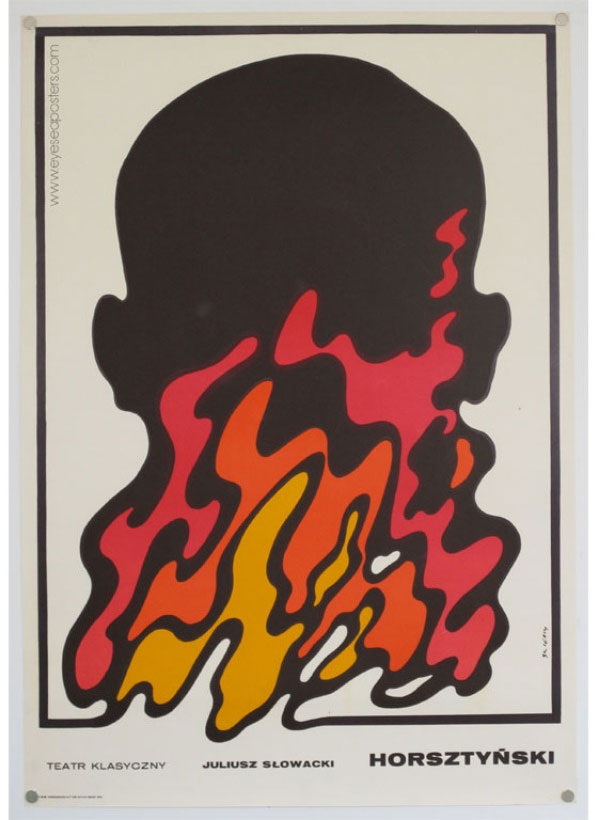





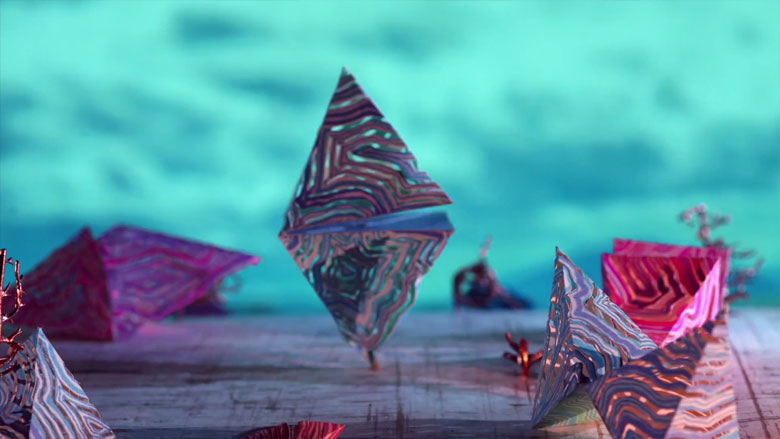



 Picture of "Raven Releasing the Sun", by Todd Baker
Picture of "Raven Releasing the Sun", by Todd Baker
 An illustration from an 18th-century Icelandic manuscript depicting Huginn and Muninn sitting on the shoulders of Odin.
An illustration from an 18th-century Icelandic manuscript depicting Huginn and Muninn sitting on the shoulders of Odin.





 Harlem - Saturday (Funkþátturinn) @ 01:30
Hermigervill is like Animal on Sesame Street, a whirling dervish of hair, playing some bizarrely childish electronic beats. But the real gem of his performance is that he is having more fun on stage than the entire audience combined.
Harlem - Saturday (Funkþátturinn) @ 01:30
Hermigervill is like Animal on Sesame Street, a whirling dervish of hair, playing some bizarrely childish electronic beats. But the real gem of his performance is that he is having more fun on stage than the entire audience combined.

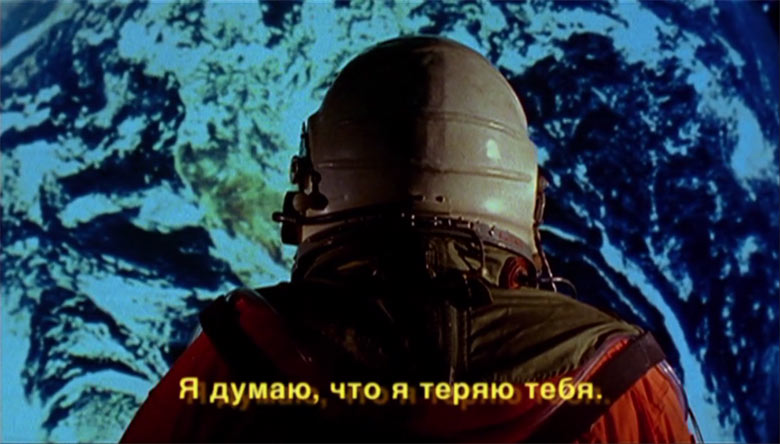



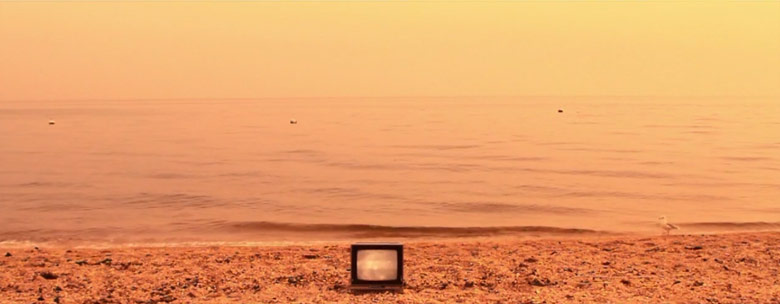
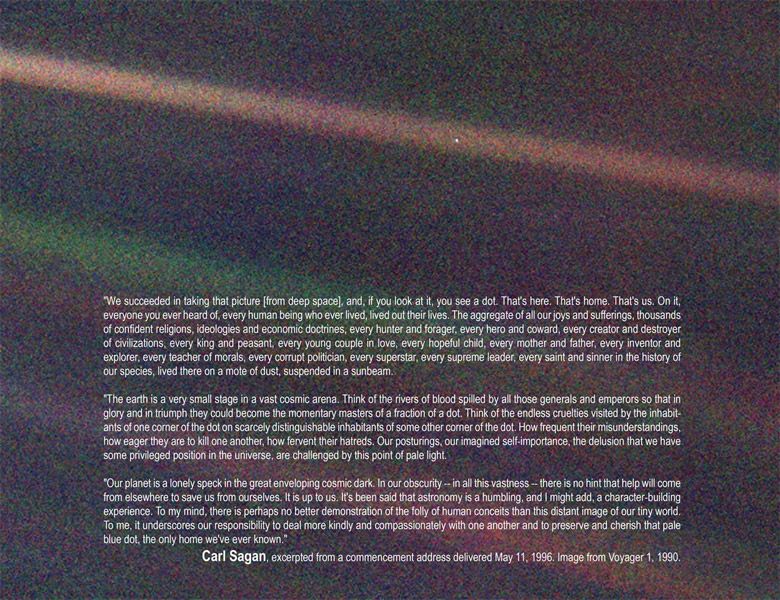



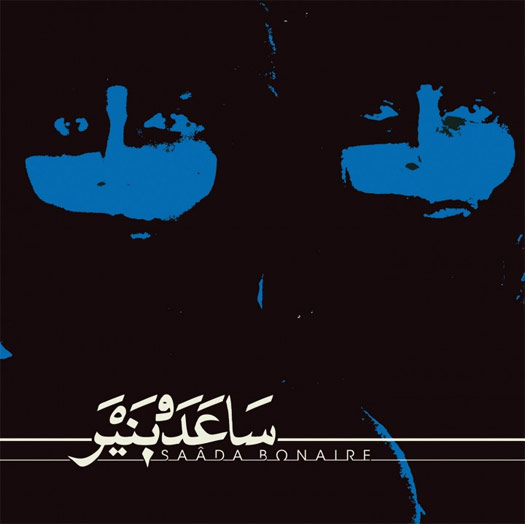
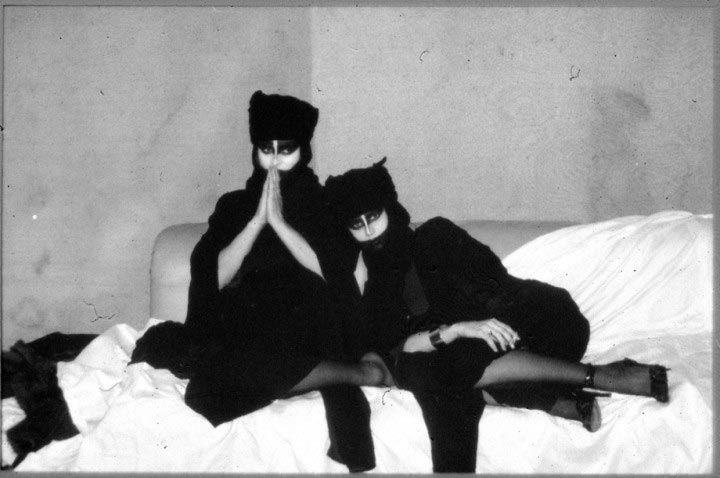

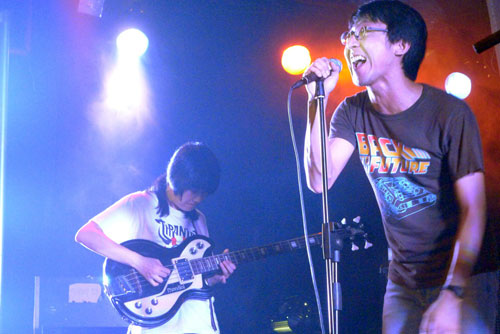
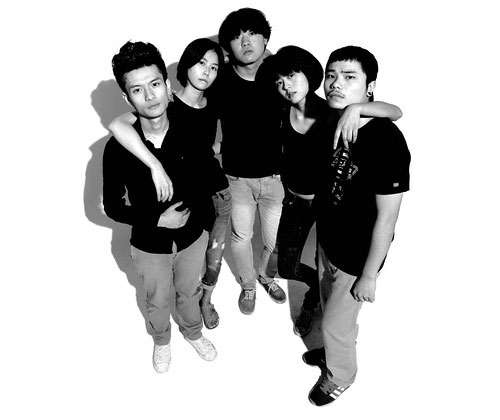
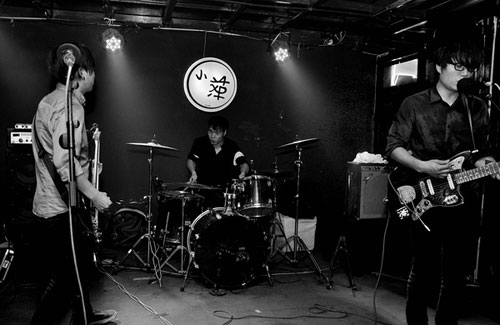














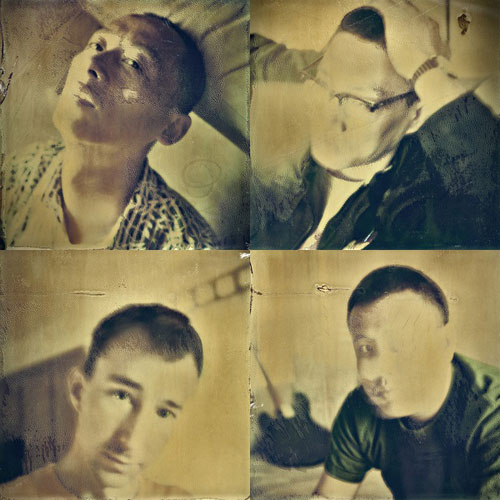

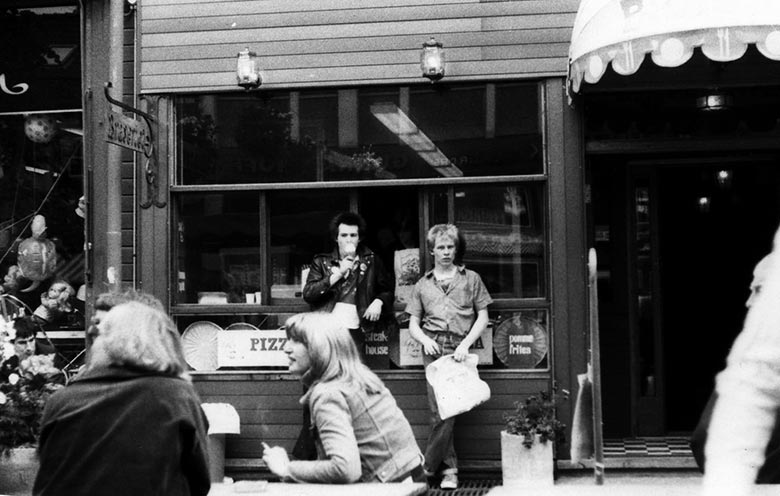

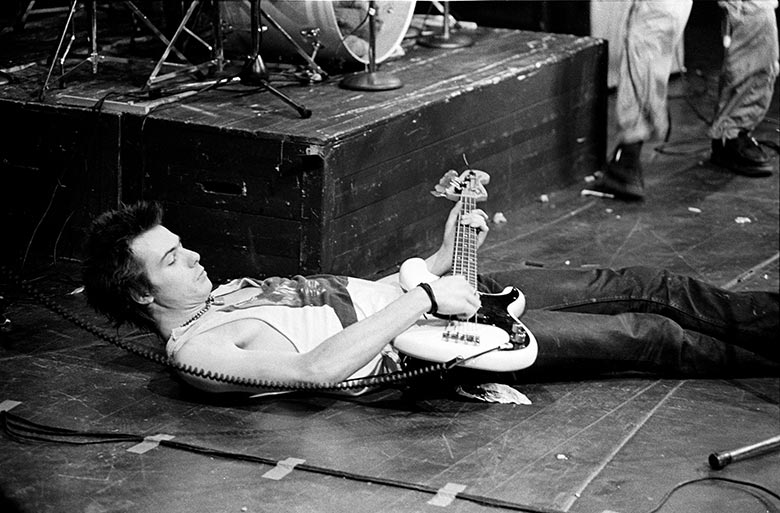


 Image © Stephen Lofstrom.
The glitch aesthetic is generally expressed in visuals that are fragmented, warped, discolored, and often filled with noise, as a result of technological errors in equipment or digital image codes. Mutations are seemingly infinite, varying between the unrecognizable; simple interplaying layers such as linear patterns; minimal to moderate distortions; and slightly shifted perspectives on an otherwise nearly preserved image.
To capture such decay of image data, glitch artists amass their materials from a combination of analog and digital sources -- but the roots of glitch lie in analog technology, such as television screens and cameras that are prone to malfunctioning. There, the artist can naturally encounter visual error without having to primarily simulate the effect through software. Circuit bending, for instance, is a technique that an artist can employ, by rewiring electronic devices so that their behavior changes. A glitch artist can coax a disrupted image from the altered functions; he or she can create with broken equipment and make defective hardware the premise of their work.
"This is an extreme form of modification which has the potential to push the device well beyond design specifications, into unknown territory, through to points of failure," explains Brooklyn-based electronic media artist Phillip Stearns. "Documenting the process using audio recording, video recording or still images is handy when the on-board capabilities of the device are severely compromised."
Image © Stephen Lofstrom.
The glitch aesthetic is generally expressed in visuals that are fragmented, warped, discolored, and often filled with noise, as a result of technological errors in equipment or digital image codes. Mutations are seemingly infinite, varying between the unrecognizable; simple interplaying layers such as linear patterns; minimal to moderate distortions; and slightly shifted perspectives on an otherwise nearly preserved image.
To capture such decay of image data, glitch artists amass their materials from a combination of analog and digital sources -- but the roots of glitch lie in analog technology, such as television screens and cameras that are prone to malfunctioning. There, the artist can naturally encounter visual error without having to primarily simulate the effect through software. Circuit bending, for instance, is a technique that an artist can employ, by rewiring electronic devices so that their behavior changes. A glitch artist can coax a disrupted image from the altered functions; he or she can create with broken equipment and make defective hardware the premise of their work.
"This is an extreme form of modification which has the potential to push the device well beyond design specifications, into unknown territory, through to points of failure," explains Brooklyn-based electronic media artist Phillip Stearns. "Documenting the process using audio recording, video recording or still images is handy when the on-board capabilities of the device are severely compromised."
 Image © Sabato Visconti
Image © Sabato Visconti


 Image (top) © Sabato Visconti, (middle) © Mathieu St-Pierre, (bottom) © KARBORN
Image (top) © Sabato Visconti, (middle) © Mathieu St-Pierre, (bottom) © KARBORN

 Spanish text by Tom Cabrera; English translation by Estefanía Enzenhofer
"My mechanism-process is having a good stock of my own pictures that generate a common ground, a visual world where these pictures can dialogue. When I expose them to the heat of the scanner, I try to move the photograph over light in a way that creates a simple choreography that explores the static form. Once I feel that the photographs have exhausted all their possibilities of deformation, I look over them and select those that have really exploited the resource beyond just technical qualities.
I believe that glitch doesn't apply to every picture and this is why themes run out. Body anatomy and architecture are two big image fields for me because their formal aspects allow me to play around with their specific morphology. To transform what is known to address the unknown. The more recognizable the glitched form is, the more interesting the visual interplay becomes." - Tom Cabrera
Mi mecanismo-proceso es tener un buen stock de fotografías propias que generen un mundo visual común o equilibrado, que dialoguen entre ellas. Al exponerlas al calor del scanner, intento que los movimientos que voy haciendo de la fotografía sobre la luz, armen una coreografía simple que explore la forma inmóvil. A partir de eso, es hacer muchas pruebas a ciegas y sin ver los resultados que van generando el escaneado. Una vez que siento que la fotografía agotó sus instancias de deformación, las reviso y selecciono para encontrar aquellas que realmente explotan el recurso más allá de sus cualidades técnicas.
Considero que no todas las fotografías responden igual a los glitchs y por eso, las temáticas se acortan. La anatomía del cuerpo y la arquitectura creo que son dos grandes grupos de trabajo de la imagen, más que nada porque sus cuestiones formales me permiten jugar mucho más con su morfología específica. Transformar desde lo conocido para abordar lo desconocido. Mientras más reconocible es la figura/forma que se expondrá al glitch, más interesante es el juego visual que propone la pieza para el espectador."- Tom Cabrera
Spanish text by Tom Cabrera; English translation by Estefanía Enzenhofer
"My mechanism-process is having a good stock of my own pictures that generate a common ground, a visual world where these pictures can dialogue. When I expose them to the heat of the scanner, I try to move the photograph over light in a way that creates a simple choreography that explores the static form. Once I feel that the photographs have exhausted all their possibilities of deformation, I look over them and select those that have really exploited the resource beyond just technical qualities.
I believe that glitch doesn't apply to every picture and this is why themes run out. Body anatomy and architecture are two big image fields for me because their formal aspects allow me to play around with their specific morphology. To transform what is known to address the unknown. The more recognizable the glitched form is, the more interesting the visual interplay becomes." - Tom Cabrera
Mi mecanismo-proceso es tener un buen stock de fotografías propias que generen un mundo visual común o equilibrado, que dialoguen entre ellas. Al exponerlas al calor del scanner, intento que los movimientos que voy haciendo de la fotografía sobre la luz, armen una coreografía simple que explore la forma inmóvil. A partir de eso, es hacer muchas pruebas a ciegas y sin ver los resultados que van generando el escaneado. Una vez que siento que la fotografía agotó sus instancias de deformación, las reviso y selecciono para encontrar aquellas que realmente explotan el recurso más allá de sus cualidades técnicas.
Considero que no todas las fotografías responden igual a los glitchs y por eso, las temáticas se acortan. La anatomía del cuerpo y la arquitectura creo que son dos grandes grupos de trabajo de la imagen, más que nada porque sus cuestiones formales me permiten jugar mucho más con su morfología específica. Transformar desde lo conocido para abordar lo desconocido. Mientras más reconocible es la figura/forma que se expondrá al glitch, más interesante es el juego visual que propone la pieza para el espectador."- Tom Cabrera

 "I work quite a lot with gender identities and their impacts on the 'normative matrix' (Heterosexual Matrix by Judith Butler (1990)). We regard male, female and hetero sexuality as normal -- hopefully most of us -- also bi- and homosexuality. Yet that limits us to up to three categories of the biological gender, thereby neglecting the psychological gender, which I regard as equally important to being human as the biological one. The tricky part about that story is to read that gender since it’s not done by lifting one's skirt.
Society and culture have established a frameset for what’s intelligible (note: readable) and what’s thereby not ruling out any masculine or feminine behaviour that’s outside of its respective gender norm. Given that culture and society can be described as a system, the act of acting outside the norm sends out information that is hardly decipherable by a receiver that’s not familiar to the codification, thus leading to a heightened likelihood that cultural glitch occurs. In my performances, I’d usually work with drag and/or make up to play with codes within the system of cultural grammar, but not exclusively." - Raffael "Urban Grau" Miribung
"I work quite a lot with gender identities and their impacts on the 'normative matrix' (Heterosexual Matrix by Judith Butler (1990)). We regard male, female and hetero sexuality as normal -- hopefully most of us -- also bi- and homosexuality. Yet that limits us to up to three categories of the biological gender, thereby neglecting the psychological gender, which I regard as equally important to being human as the biological one. The tricky part about that story is to read that gender since it’s not done by lifting one's skirt.
Society and culture have established a frameset for what’s intelligible (note: readable) and what’s thereby not ruling out any masculine or feminine behaviour that’s outside of its respective gender norm. Given that culture and society can be described as a system, the act of acting outside the norm sends out information that is hardly decipherable by a receiver that’s not familiar to the codification, thus leading to a heightened likelihood that cultural glitch occurs. In my performances, I’d usually work with drag and/or make up to play with codes within the system of cultural grammar, but not exclusively." - Raffael "Urban Grau" Miribung
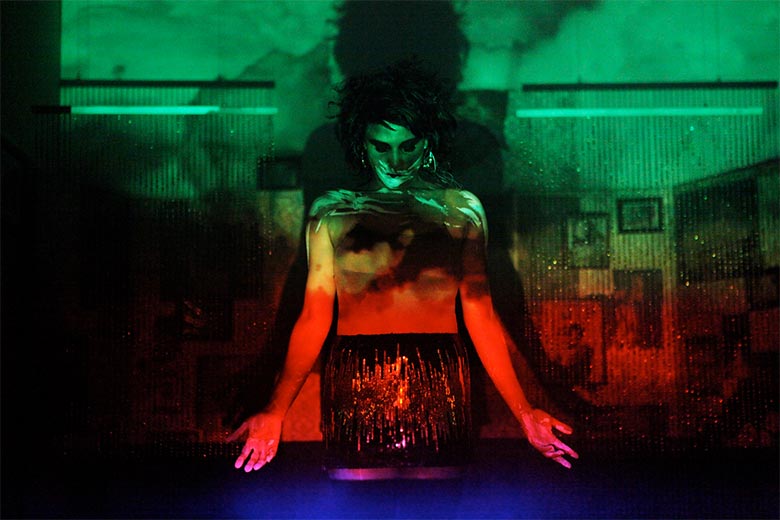




 It soon becomes apparent that Abu Eyad can no longer take the oppressive weight of life inside the camp. Unable to leave, and unable to work for a living, he is (like many young men) in purgatory. His boredom and hatred of Lebanon, and of the politics in the region, begin to fester. Music and movies brought by Fliefel from abroad appease Abu Eyad's moods at first. But eventually Abu Eyad becomes fed up with life in Ain al-Hilweh. "I want to blow myself up," he confides, at one point, to Fleifel. He talks of wanting to die, simply to end a life with no prospect of betterment or change. Ostensibly in preparation, we watch Abu Eyad giving away his possessions, burning his school papers and books, and clearing out of his apartment to stay at one of the Fatah-sponsored residences.
Fleifel's uncle Said is also increasingly on-edge. Once a cool and fun-loving mentor to Fleifel, Said is frustrated with his life as a single man. He collects cans to sell by the kilo, and cannot save up enough money to marry, despite pressure from his family to do so. Said dwells on the death of his older brother when they were teenagers (in a gun battle against Lebanese soldiers attempting to invade the camp) and tends to the pigeons he keeps on his rooftop. We learn that he once was cheated out of an opportunity to flee Lebanon by a family member, an event that darkly hovers over the fun-guy persona he portrays outwardly in the camp.
Interspersed throughout the film are little snippets of daily life. We see that inside Ain al-Hilweh, the refugees enjoy some of the privileges we all do. They drink soda and juice. Many families have a television, with daytime shows just as bad as Days of Our Lives and American Idol. Coffee and cigarettes are a daily routine. Growing up, Fleifel would watch American action movies with his uncle Said. A BMW SUV drives by in one shot. One friend of the family has a wedding, and wears a beautiful white dress, and there is dancing and a tearful celebration before the bride leaves. Clothespins hang on clotheslines in courtyards or on top of buildings.
The details of Ain al-Hilweh contrast greatly with the few images we get of a seemingly idyllic Denmark, where Fleifel spent his young adult years. While green and furtile, most days there were rainy and cold. Instead of people congregating and living their life in the narrow streets of Ain al-Hilweh, there are open but empty pastures, urban homes that sprawl, and long drives to find halal meat and other treats from home. Fleifel tells us he was embarrassed of his family while growing up in Denmark. Trying to fit in there, his father's ways in particular were a reminder to him that he was out of place.
Fleifel is careful to include both the dark and light sides of life in Ain al-Hilweh. At times, it feels like too much footage is included – but it is diverse for a reason. The universality of these feelings, items, and activities heightens the viewer's appreciation of both the anger and deep weariness that landlessness foments. Above all, the futility of clinging to a piece of land that is no longer one's home comes through. Home is, after all, wherever one is, or where one continues to return. For many Palestinians, that has become Ain al-Hilweh.
Ω
It soon becomes apparent that Abu Eyad can no longer take the oppressive weight of life inside the camp. Unable to leave, and unable to work for a living, he is (like many young men) in purgatory. His boredom and hatred of Lebanon, and of the politics in the region, begin to fester. Music and movies brought by Fliefel from abroad appease Abu Eyad's moods at first. But eventually Abu Eyad becomes fed up with life in Ain al-Hilweh. "I want to blow myself up," he confides, at one point, to Fleifel. He talks of wanting to die, simply to end a life with no prospect of betterment or change. Ostensibly in preparation, we watch Abu Eyad giving away his possessions, burning his school papers and books, and clearing out of his apartment to stay at one of the Fatah-sponsored residences.
Fleifel's uncle Said is also increasingly on-edge. Once a cool and fun-loving mentor to Fleifel, Said is frustrated with his life as a single man. He collects cans to sell by the kilo, and cannot save up enough money to marry, despite pressure from his family to do so. Said dwells on the death of his older brother when they were teenagers (in a gun battle against Lebanese soldiers attempting to invade the camp) and tends to the pigeons he keeps on his rooftop. We learn that he once was cheated out of an opportunity to flee Lebanon by a family member, an event that darkly hovers over the fun-guy persona he portrays outwardly in the camp.
Interspersed throughout the film are little snippets of daily life. We see that inside Ain al-Hilweh, the refugees enjoy some of the privileges we all do. They drink soda and juice. Many families have a television, with daytime shows just as bad as Days of Our Lives and American Idol. Coffee and cigarettes are a daily routine. Growing up, Fleifel would watch American action movies with his uncle Said. A BMW SUV drives by in one shot. One friend of the family has a wedding, and wears a beautiful white dress, and there is dancing and a tearful celebration before the bride leaves. Clothespins hang on clotheslines in courtyards or on top of buildings.
The details of Ain al-Hilweh contrast greatly with the few images we get of a seemingly idyllic Denmark, where Fleifel spent his young adult years. While green and furtile, most days there were rainy and cold. Instead of people congregating and living their life in the narrow streets of Ain al-Hilweh, there are open but empty pastures, urban homes that sprawl, and long drives to find halal meat and other treats from home. Fleifel tells us he was embarrassed of his family while growing up in Denmark. Trying to fit in there, his father's ways in particular were a reminder to him that he was out of place.
Fleifel is careful to include both the dark and light sides of life in Ain al-Hilweh. At times, it feels like too much footage is included – but it is diverse for a reason. The universality of these feelings, items, and activities heightens the viewer's appreciation of both the anger and deep weariness that landlessness foments. Above all, the futility of clinging to a piece of land that is no longer one's home comes through. Home is, after all, wherever one is, or where one continues to return. For many Palestinians, that has become Ain al-Hilweh.
Ω

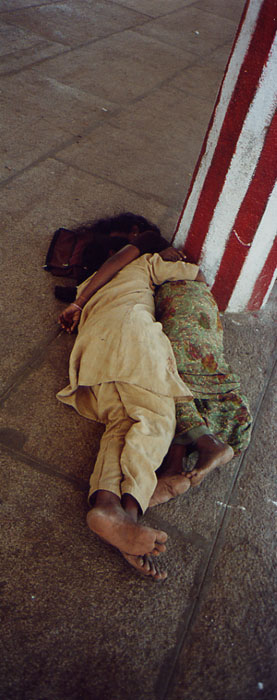 The project’s accompanying albums, Marram’s Sun Choir and BOATS, feature many international and noteworthy musicians. Many of the tracks on these albums share an epic quality, with sonic ranges and depths sometimes verging on chaos, yet often tempered by the raw quality of the recordings of the children's voices. There are meditative interludes with looped samples, used to ambient effect, combined with the influence of the children's instinctive chanting, which is a sound deeply entrenched within their everyday culture. Anyone who's been to India will have experienced a similar saturation of the senses.
Most of the musicians involved worked remotely using samples of the children's voices, but all took a different approach. American rapper and producer Doseone wanted to create the feeling of a mutual and fun exchange with the children, as if they were in the room together. The result is a rap-like song, which seems almost like a dialogue between him and the children.
Greg Saunier, best known as the drummer of Deerhoof, endeavored to embrace the gulf between the two cultures and languages with a formalist piece of music that eschewed linguistics and focused instead on the sonic poetics of the sampled recordings of the children's voices.
Tim Rutili from Califone was deeply affected by the children's voices, which he describes as "beautiful and haunted". In response to images of "smallness" and "innocence" that the children’s voices conjured up for him, Rutili created a song to affirm their solidarity and strength. The result, "Those Mountains are God's Teeth", merges Rutili's distinctively American drawl and delicate twangs of guitar, with the soaring, almost unearthly ringing of the children's choir. Echo and reverb swathe the voices atop an ambient synth backdrop, heightening the track’s mystical and epic qualities.
Rutili talks of the capacity for music to induce "momentary unity", which in turn may plant the seeds of opening up the consciousness. The experience of working with the children's voices has since inspired him to want to work on further charitable projects.
The project’s accompanying albums, Marram’s Sun Choir and BOATS, feature many international and noteworthy musicians. Many of the tracks on these albums share an epic quality, with sonic ranges and depths sometimes verging on chaos, yet often tempered by the raw quality of the recordings of the children's voices. There are meditative interludes with looped samples, used to ambient effect, combined with the influence of the children's instinctive chanting, which is a sound deeply entrenched within their everyday culture. Anyone who's been to India will have experienced a similar saturation of the senses.
Most of the musicians involved worked remotely using samples of the children's voices, but all took a different approach. American rapper and producer Doseone wanted to create the feeling of a mutual and fun exchange with the children, as if they were in the room together. The result is a rap-like song, which seems almost like a dialogue between him and the children.
Greg Saunier, best known as the drummer of Deerhoof, endeavored to embrace the gulf between the two cultures and languages with a formalist piece of music that eschewed linguistics and focused instead on the sonic poetics of the sampled recordings of the children's voices.
Tim Rutili from Califone was deeply affected by the children's voices, which he describes as "beautiful and haunted". In response to images of "smallness" and "innocence" that the children’s voices conjured up for him, Rutili created a song to affirm their solidarity and strength. The result, "Those Mountains are God's Teeth", merges Rutili's distinctively American drawl and delicate twangs of guitar, with the soaring, almost unearthly ringing of the children's choir. Echo and reverb swathe the voices atop an ambient synth backdrop, heightening the track’s mystical and epic qualities.
Rutili talks of the capacity for music to induce "momentary unity", which in turn may plant the seeds of opening up the consciousness. The experience of working with the children's voices has since inspired him to want to work on further charitable projects.
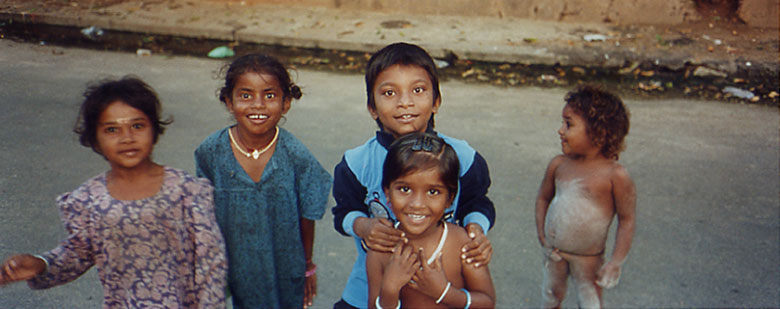
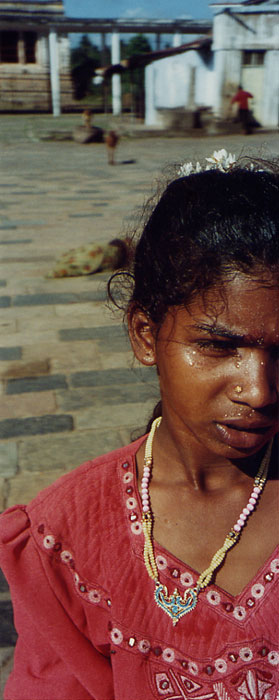 Untouchables are born into an unalterable social status, allowed only to mix and marry with those from their own caste and to perform only lowly jobs and tasks befitting their "station" in life. This belief system decrees that acceptance of these restrictions and living a virtuous life may lead to an individual moving up the caste system in their next incarnation. Whilst laws made have since made discrimination against the untouchables illegal, it still prevails and remains painfully evident in India, Nepal, Sri Lanka, Bangladesh and Pakistan to this day.
Particularly in the rural areas of India, where the majority of the poor population live, untouchables are banned from temples and higher caste homes. They perform jobs such as cleaning latrines and sewers by hand, or are bonded workers, many repaying debts incurred generations ago. Figures published only fifteen years ago saw 15 million children working in slave-like conditions for less than a dollar a day.
In 2001, Amnesty International reported on an "extremely high" number of sexual assaults on Dalit women, often the victims of landlords, upper-caste villagers, and police officers. Only 5% of the attacks were reported, and 30% of the rape complaints were dismissed by the police as false.
Thousands of pre-teen Dalit girls are forced into prostitution. Named devadasis, which translates to "female servant of god", they are "married" to a deity or a temple, where they are forced to have sex with upper-caste community members until they are finally sold to urban brothels.
In 2013, national crime statistics indicated an average of over 1,000 rape cases against Dalit women are reported annually, the highest of any social group. Bear in mind the majority of crimes will go unreported, and murders of rape victims often go unpunished.
Untouchables are born into an unalterable social status, allowed only to mix and marry with those from their own caste and to perform only lowly jobs and tasks befitting their "station" in life. This belief system decrees that acceptance of these restrictions and living a virtuous life may lead to an individual moving up the caste system in their next incarnation. Whilst laws made have since made discrimination against the untouchables illegal, it still prevails and remains painfully evident in India, Nepal, Sri Lanka, Bangladesh and Pakistan to this day.
Particularly in the rural areas of India, where the majority of the poor population live, untouchables are banned from temples and higher caste homes. They perform jobs such as cleaning latrines and sewers by hand, or are bonded workers, many repaying debts incurred generations ago. Figures published only fifteen years ago saw 15 million children working in slave-like conditions for less than a dollar a day.
In 2001, Amnesty International reported on an "extremely high" number of sexual assaults on Dalit women, often the victims of landlords, upper-caste villagers, and police officers. Only 5% of the attacks were reported, and 30% of the rape complaints were dismissed by the police as false.
Thousands of pre-teen Dalit girls are forced into prostitution. Named devadasis, which translates to "female servant of god", they are "married" to a deity or a temple, where they are forced to have sex with upper-caste community members until they are finally sold to urban brothels.
In 2013, national crime statistics indicated an average of over 1,000 rape cases against Dalit women are reported annually, the highest of any social group. Bear in mind the majority of crimes will go unreported, and murders of rape victims often go unpunished.
 The image on the cover of Abandoned City, an illustration of the skeleton of a large building, seems to be a reminder that there can be "abandoned" cities within living cities, in the physical remains of old foundations and structures, or even in people's memories of locations that have changed over time. In fact, the image was taken from a city that is very much alive, which seems to suggest that a sense of renewal also plays in to the album's theme.
"I had the music finished, every track, and I was looking at this picture..." Bertelmann explains, recalling an occurrence at a friend's house in San Francisco. "I said to the man, I think I would love to have this picture for my living room.... Somehow, this was resonating with the feeling that I had while I was writing the music. I think it was a parking garage in Las Vegas, outside of Las Vegas; [in] the black and white version of this picture you can see in the back the airport of Las Vegas, very, very [present] in the dust. What I liked about it is that it has only a kind of structure, but it also feels like there is some loneliness in there, but on the other side, it also looks like a monument."
"Especially in American cities you have... maybe empty streets, or you have a kind of area where you just think, ‘Oh man, where am I?'" he continues, "because there is nobody here, even in the huge city. That actually somehow totally got me into this theme of abandoned cities... Why are they abandoned?"
Bertelmann notes that he also made quite certain to not only choose locations with serious tragedies underscoring them, "because you can come in very quickly into the kind of war zone where you feel like maybe nearly half of the cities are abandoned because of the catastrophe and war, or they got destroyed, or people got killed, or things like that. You have also cities that have a very funny or very obscure background. I tried to actually add those as well, to give [Abandoned City] a little bit more of the broader range and maybe to show that I'm not only interested in the drama and the war catastrophe."
The image on the cover of Abandoned City, an illustration of the skeleton of a large building, seems to be a reminder that there can be "abandoned" cities within living cities, in the physical remains of old foundations and structures, or even in people's memories of locations that have changed over time. In fact, the image was taken from a city that is very much alive, which seems to suggest that a sense of renewal also plays in to the album's theme.
"I had the music finished, every track, and I was looking at this picture..." Bertelmann explains, recalling an occurrence at a friend's house in San Francisco. "I said to the man, I think I would love to have this picture for my living room.... Somehow, this was resonating with the feeling that I had while I was writing the music. I think it was a parking garage in Las Vegas, outside of Las Vegas; [in] the black and white version of this picture you can see in the back the airport of Las Vegas, very, very [present] in the dust. What I liked about it is that it has only a kind of structure, but it also feels like there is some loneliness in there, but on the other side, it also looks like a monument."
"Especially in American cities you have... maybe empty streets, or you have a kind of area where you just think, ‘Oh man, where am I?'" he continues, "because there is nobody here, even in the huge city. That actually somehow totally got me into this theme of abandoned cities... Why are they abandoned?"
Bertelmann notes that he also made quite certain to not only choose locations with serious tragedies underscoring them, "because you can come in very quickly into the kind of war zone where you feel like maybe nearly half of the cities are abandoned because of the catastrophe and war, or they got destroyed, or people got killed, or things like that. You have also cities that have a very funny or very obscure background. I tried to actually add those as well, to give [Abandoned City] a little bit more of the broader range and maybe to show that I'm not only interested in the drama and the war catastrophe."

 All bands need good stories, and GOAT’s is one of the better ones. A quick Google search of Korpilombo and voodoo yields nothing but GOAT-related results. Combine this wonky backstory with the fact that live, the members of GOAT all wear cloaks and masks and operate in a shroud of mystery, and it is enough to be almost too much of a schtick. But what makes the tradition of GOAT work is that the band doesn’t let this aura undermine the music.
All bands need good stories, and GOAT’s is one of the better ones. A quick Google search of Korpilombo and voodoo yields nothing but GOAT-related results. Combine this wonky backstory with the fact that live, the members of GOAT all wear cloaks and masks and operate in a shroud of mystery, and it is enough to be almost too much of a schtick. But what makes the tradition of GOAT work is that the band doesn’t let this aura undermine the music. Although virtually all the songs GOAT perform live are much longer than their recorded counterparts, the band makes sure to keep their songs at digestible length; they don't allow anything to go for so long that any ounce of boredom can set in, and this is an important point. All the elements are there for GOAT to jam band off into space and leave everyone else behind, but the band has the maturity to keep it all close, yet new and original, at the same time.
Bands with schticks are a dangerous thing. It is easy to get overwhelmed by the story and just be that crazy band with outfits. GOAT are anything but. World Music, their debut full-length, was one of the best psychedelic albums to come out in the past few years. The band followed it up with a live album of the recorded material, and it is even better. GOAT, as a band, isn’t just music; it is an experience.
Ω
Although virtually all the songs GOAT perform live are much longer than their recorded counterparts, the band makes sure to keep their songs at digestible length; they don't allow anything to go for so long that any ounce of boredom can set in, and this is an important point. All the elements are there for GOAT to jam band off into space and leave everyone else behind, but the band has the maturity to keep it all close, yet new and original, at the same time.
Bands with schticks are a dangerous thing. It is easy to get overwhelmed by the story and just be that crazy band with outfits. GOAT are anything but. World Music, their debut full-length, was one of the best psychedelic albums to come out in the past few years. The band followed it up with a live album of the recorded material, and it is even better. GOAT, as a band, isn’t just music; it is an experience.
Ω
